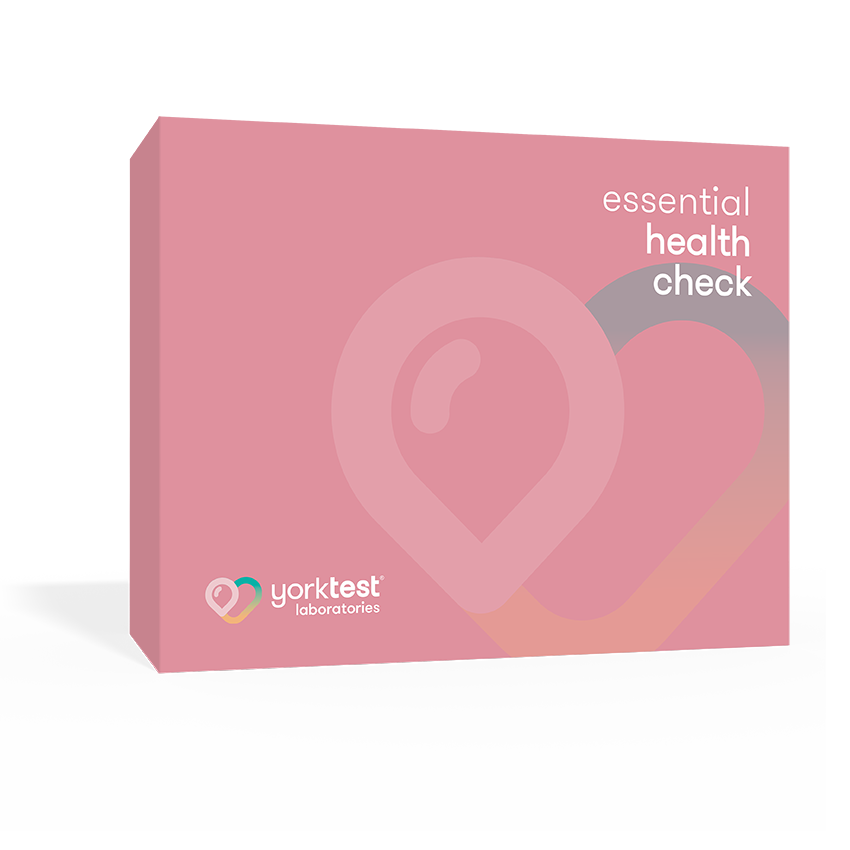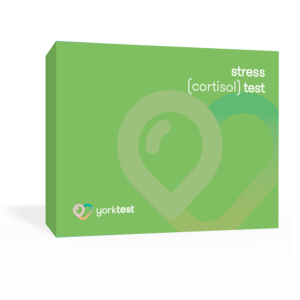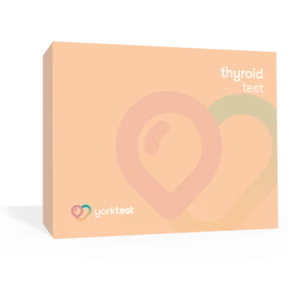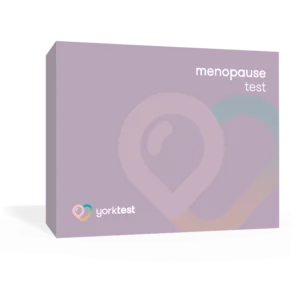- What is Cholesterol?
- How Cholesterol Works
- Good Cholesterol vs Bad Cholesterol Test
- LDL (Bad Cholesterol)
- HDL (Good Cholesterol)
- What are the Causes of High Cholesterol?
- Symptoms and Risks of High Cholesterol
- How to lower cholesterol with lifestyle improvements
- Cholesterol TestingÂ
- At-Home Cholesterol Test
- Your Cholesterol Test Results vs Normal Levels
- References
What is Cholesterol?
In simple terms, cholesterol is a type of fat found in every cell in the body. It’s considered an essential building block in the cell membrane and it facilitates several critical functions, like maintaining:
- biosynthesis of sexual hormones (like testosterone and oestrogen),
- production of vitamin D,
- cell wall health and fluidity, and
- bile in the liver for digestion and nutrient absorption.
Our bodies produce all the cholesterol needed to perform these processes, but it’s also found in animal-based foods, like meat and dairy products. Because a vast majority of cholesterol is made naturally in our bodies, only about 20% comes from the food we eat.
How Cholesterol Works
Cholesterol cannot circulate the bloodstream alone. Imagine pouring olive oil into water. In order for cholesterol to combine with blood and circulate through the body, special particles called lipoproteins (lipid plus protein) are required to bundle cholesterol and other lipids.
Lipoproteins come in a variety of types and sizes, such as chylomicrons and very-low-density lipoproteins (VLDL) that carry triglycerides and larger fatty acid particles. Or more common types like low-density lipoproteins (LDL) and high-density lipoproteins (HDL), which are responsible for transporting purely cholesterol.
Good Cholesterol vs Bad Cholesterol Test
The two types of lipoproteins that transport cholesterol, low-density lipoprotein (LDL) and high-density lipoprotein (HDL), are the key metrics behind good cardiovascular health or encountering problems. A cholesterol test is the only way to accurately measure LDL and HDL levels in your blood.
LDL (Bad Cholesterol)
LDL cholesterol, which is notorious for being the “bad†type of cholesterol, contributes to fatty deposits and hardening of the arteries (atherosclerosis). Too much LDL cholesterol leads to the progressive narrowing of arteries, increasing the risk of cardiovascular issues, like stroke, heart attack, and peripheral artery disease (PAD).
Foods high in saturated and trans fat tend to raise LDL cholesterol levels, so it’s important to be aware of how your diet and genetics play into your LDL levels and cardiovascular health.
HDL (Good Cholesterol)
HDL cholesterol is widely known as the “good†cholesterol. Healthy HDL cholesterol levels are shown to protect against heart attack and stroke. HDL also transports quantities of LDL away from the arteries and back to the liver, where it’s eventually passed from the body.
Individuals with high triglyceride levels or fat stores may also have lower levels of HDL. Factors like poor diet, sedentary lifestyle, type 2 diabetes, smoking, and genetics can all influence HDL cholesterol levels. Additionally, women tend to have higher levels of HDL cholesterol than men, this can change after menopause.
What are the Causes of High Cholesterol?
There are many interrelated lifestyle factors that can contribute to high levels of unhealthy cholesterol. These include:
- Diet – Eating foods high in saturated fats (full-fat dairy products and red meat) and trans fats (processed oils and baked goods) can raise total cholesterol levels. However, dietary cholesterol and the amount of cholesterol in your blood are two very different things2 and don’t tell the complete story.
- Exercise – Not only does exercise help individuals maintain a healthy weight but there are several mechanisms involved in how exercise influences cholesterol levels. Among the most important is the stimulus exercise can have on certain enzymes that help move LDL from blood to liver, enabling it to be converted into bile and passed through the liver. Similarly, vigorous exercise is an efficient way to raise HDL levels.
- Obesity – Obesity, which is generally characterized by the amount of calories consumed outweighing the amount of energy expended, is often the result of excess consumption of dietary fat. Research has shown a clear link between diet (namely excessive intake of dietary cholesterol), cholesterol metabolism, and obesity.3
- Diabetes – Diabetes has a tendency to lower HDL cholesterol levels while leading to both high triglyceride levels and LDL cholesterol levels. This condition, which is called diabetic dyslipidemia, is characterized by one’s lipid profile going in the wrong direction, thereby increasing the risk for atherosclerosis, heart disease, and stroke.
- Smoking – Not only does smoking lower HDL cholesterol levels (the good kind), but it can also exacerbate LDL cholesterol by making it stickier and easier to cling to artery walls. Smoking also damages the artery walls over time, allowing cholesterol to build up.
- Alcohol – Consuming alcohol slows the liver’s ability to remove cholesterol from the bloodstream. This can result in a combination of high triglycerides levels along with low levels of HDL cholesterol, which can contribute to heart disease.
- Age – The liver becomes less efficient at removing LDL as you age, so the risks of having high cholesterol increase among individuals who are over the age of 40.
Genetics can also play a role in causing high cholesterol. However, the first line of defence is lifestyle improvements that can naturally lower cholesterol.
Symptoms and Risks of High Cholesterol
Cholesterol problems like having high LDL levels seldom come with obvious symptoms. Testing is the only way to truly know how your levels stack up against normal cholesterol levels.
However, high cholesterol can increase the risk for certain health conditions that do have obvious symptoms, like high blood pressure, stroke, angina (chest pains), and cardiovascular issues.
These symptoms, which can overlap across conditions like heart disease, stroke, and atherosclerosis, commonly manifest by experiencing:
- dizziness or light-headedness
- wobbly, unsteady gait
- drooping jaw or slurred speech
- pain or pressure in the left-side chest
- pain in the lower limbs
Some conditions, such as kidney disease, liver disease, or underactive thyroid, can also cause higher cholesterol levels, so it’s important to consider these conditions as well. While these symptoms are often more severe and require immediate medical attention, any of them may be linked to having high cholesterol.
How to lower cholesterol with lifestyle improvements


Aside from age and genetic factors, cholesterol levels are often directly related to certain lifestyle habits and choices. In turn, making healthy decisions and forming healthy habits can have the greatest impact in helping you reduce bad cholesterol.
Fibre – Consuming a high-fibre diet can help to lower your cholesterol. Fibre works to reduce the amount of cholesterol that’s absorbed into the bloodstream from your intestine. Fresh fruits, vegetables, oats, seeds, and wholegrain foods are great sources of fibre.
Healthy Fats – In general, limit the amount of animal-based fats in your diet (e.g. from meat and dairy) and instead stick with healthier fats, like avocado, nuts, seeds, olives, and omega 3’s. Swap full-fat dairy products like whole milk, sour cream, and butter with low-fat options like natural yogurt, skimmed milk, and reduced-fat cheese, and vegetable-based cooking oils and spreads.
Lean Proteins – Reduce your consumption of red meat or processed meat as a protein source. Opt for leaner protein options like fish, chicken, turkey, or soy. Whey protein has even been shown to reduce LDL cholesterol. Legumes and grains are also great sources of fibre-rich, plant-based protein.
Exercise – Various forms of movement and exercise, like running, swimming, cycling, and strength training, have been shown to help raise good cholesterol levels (HDL) while reducing bad cholesterol levels (LDL). A 2002 study by Duke University found that higher intensity exercise is better than moderate-to-low-intensity exercise for lowering cholesterol.
Kick Bad Habits – Limit alcohol consumption to moderate amounts, if at all. If you are a smoker, take the necessary steps to quit smoking. Use resources like your local Stop Smoking Service, develop a strategy, and stick to it.
When cholesterol levels are much higher than normal and lifestyle changes are not enough, using medications like statins can be an effective tool for controlling and reducing cholesterol. This is a decision that should be made by consulting your doctor.
Cholesterol TestingÂ
A cholesterol test is a lipid test also referred to as “lipid panel†or “lipid profile†in clinical settings. A cholesterol blood test is designed to measure total cholesterol, triglyceride levels, HDL cholesterol, LDL cholesterol, and the HDL ratio. Some cholesterol tests provide even greater information and data points.
Cholesterol testing is absolutely critical to get an accurate view of an individual’s lipid profile, even for people who feel healthy and fit. According to Dr. Gill Hart, Scientific Director at YorkTest and expert biochemist with over 35 years’ experience in developing diagnostic tests and testing services:
“It’s really important to take a test, as the majority of people that have high cholesterol have no symptoms at all and do not know that they have a problem. The only way that you can find out about your cholesterol is to take a cholesterol test.â€
Not all cholesterol tests are created equally. It is crucial to get cholesterol tested by an accredited laboratory to measure all types of cholesterol and triglycerides. Dr. Hart advises taking a cholesterol blood test measuring the following for a complete picture of someone’s cholesterol health:
- Total Cholesterol
- High-Density Lipoprotein (HDL) Cholesterol
- Non HDL Cholesterol
- Triglycerides
- Cholesterol to HDL Cholesterol ratio
- Triglycerides to HDL Cholesterol ratio
- Low-Density Lipoprotein (LDL) Cholesterol
- Very Low-Density Lipoprotein (VLDL) Cholesterol
Checking triglycerides and cholesterol levels involves a simple, finger-prick blood cholesterol test. The NHS offers testing through your GP or local hospital. Alternatively, using an at-home cholesterol test kit can provide an easy and accurate solution.
At-Home Cholesterol Test
Using an at-home cholesterol test is an effective way to accurately assess your lipid profile without having to visit your GP or local healthcare provider.
YorkTest’s Essential Health Check tests for all the cholesterol markers listed above. In addition to being an easy-to-use finger-prick method, YorkTest’s home cholesterol test that requires remaining fasted (water only) overnight or for more than 8 hours before providing a blood sample.
While YorkTest tests provide accurate laboratory testing and nutritional support services backed by over 40 years of experience, at-home cholesterol testing is not a substitute for medical care. It’s advised to always visit a GP as a first option.
Your Cholesterol Test Results vs Normal Levels
The results from your test can provide a better view into how your numbers compare to normal cholesterol levels. According to Heart UK, healthy cholesterol levels for adults are:
- Total Cholesterol: below 5.0 mmol/L
- LDL Cholesterol: below 3.0 mmol/L
- HDL Cholesterol: above 1.1 mmol/L for a man and above 1.2 mmol/L for a woman
- Non-HDL Cholesterol: below 4.0 mmol/L
The call to action to get a cholesterol test can vary widely by individual. For some people, it’s an alarming response to a cardiovascular issue they may be dealing with. For others, it’s a preventative assessment to test and ensure lipid levels are in check.
Whatever the motive may be, an at-home cholesterol test through our Essential Health Check makes it easy to get an accurate lipid panel that can provide the information and awareness to take necessary action.


References
1 Zampelas, Antonis, and Emmanuella Magriplis. “New Insights into Cholesterol Functions: A Friend or an Enemy?.†Nutrients vol. 11,7 1645. 18 Jul. 2019, doi:10.3390/nu11071645
2 MFernandez ML. Rethinking dietary cholesterol. Curr Opin Clin Nutr Metab Care. 2012 Mar;15(2):117-21. doi: 10.1097/MCO.0b013e32834d2259. PMID: 22037012.
3 Mc Auley, M. “Effects of obesity on cholesterol metabolism and its implications for healthy ageing.†Nutrition Research Reviews, 33(1), 121-133. 27 Jan. 2020, doi: 10.1017/S0954422419000258













